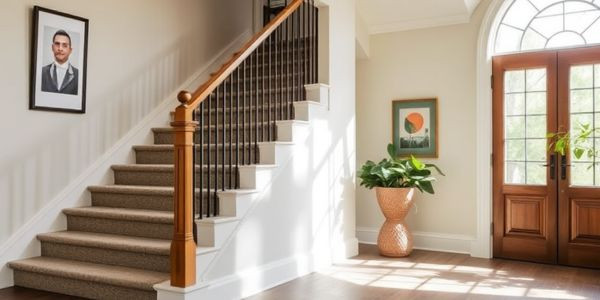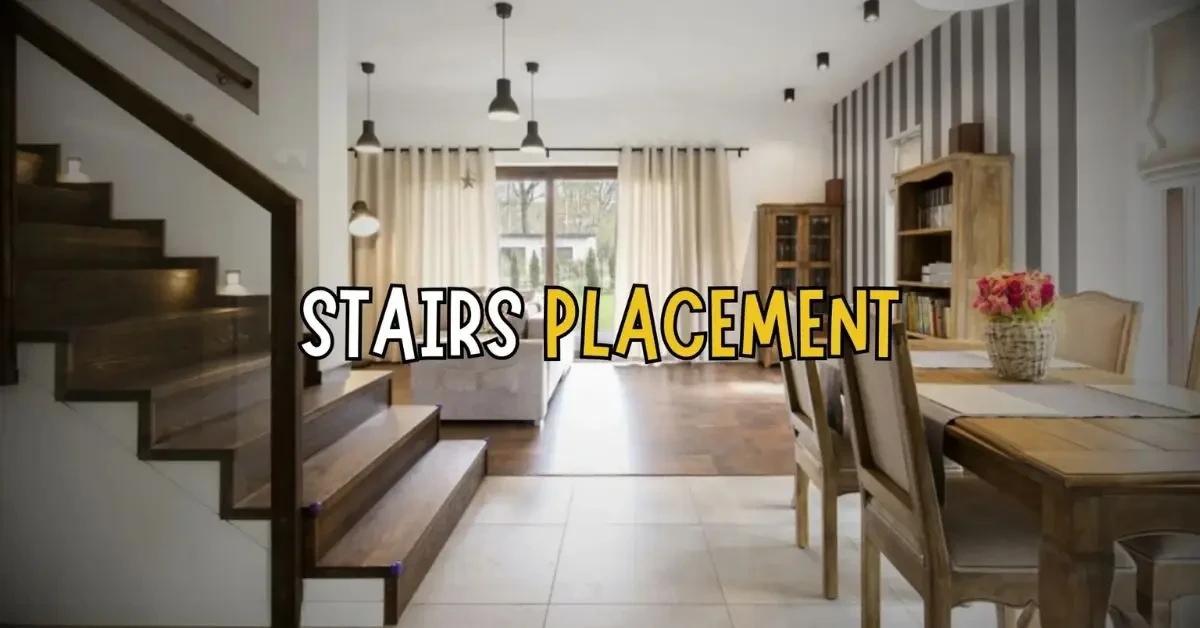STAIRS VASTU
The traditional Indian science of architecture and design of space as a living environment is Vastu Shastra, having a great impact on designing communities’ houses and buildings. All the concept principles, the layout, and the positioning of staircases rank as especially important. In Stairs Vastu, the author makes it clear that stairs are not only evil entities but also pathways for energy to flow within a space. Saying that Vastu's compliance with the design and placement of the staircase helps in having more positive energy and disruptions in the flow of positivity and balance. Here, we look into the basic principles of staircase Vastu and how these affect modern-day homes.
The Role of Staircases in Vastu

Staircases are common in any building that has more than one level, providing a means of getting from one floor to another. However, within the concept of stairs vastu, they also function as conduits through which energy moves up and down between floors. Proper stair placement, orientation, and design ensure that this energy flow remains positive and well-balanced, promoting peace and prosperity for the inhabitants.
Ideal Placement of Staircases
1. Direction of the Staircase:
- The staircase as per Vastu should be in the southern or the western direction of the house or building. These directions are linked with the lowering of the energy and they are signifying steadiness and strength.
- The staircase’s construction should not be established in the northeast direction of the house as it is the zone of worship that is responsible for pulling positive energy.
2. Internal vs. External Staircases:
- If required, external staircases should be in the Southwest or Southeast direction only.
- In a house layout, the internal staircases should not be placed with their lateral facing in the direction of the main door since this is a waste of energy.
Design and Orientation
1. Staircase Direction:
- Stairs should rise from left to right if one is facing the stair. It is also considered that it corresponds to the direction of the movement of positive energy and contributes to prosperity.
- Counter clockwise spiral staircases should not be used because it generates bad energy causing either financial strife or health problems.
2. Number of Steps:
- The total number of steps in any given staircase should be an odd number: 9, 11, 15, or 21 for instance. Vastu lists odd numbers as favorable because of stability.
- It’s considered lucky and therefore is not recommended for the steps when numbering to complete in a zero.
3. Shape and Structure:
- There must always be harmony. Do not use stair shapes of abnormal geometry, as this will give the observer the impression that he is unstable.
- Spiral staircases are not at all recommended in Vastu because they create a form of energy circulation. If unavoidable, they should be placed in the southwest corner of the house.
Material and Construction
1. Choice of Material:
- Choose sturdy and high-quality materials for the fabrication of staircases. Ownable tangible resources like wood, marble, granite and etc are considered to be favorably established.
- Do not use glass for stairs – it has symbolism of fragility and evokes feelings of insecurity.
2. Color Palette:
- Some of the best colors for stairs are brown or beige and light red shades since they will assist in grounding.
- Do not wear black or any of the shades of black as it is said to carry negative energy.
Vastu Tips for Staircase Maintenance
1. Cleanliness and Maintenance:
- All the obstructions to the flow of energy should not be prevented by keeping the staircase tidy and free from items.
- In some Asian cultures, stairs that are either broken or damaged represent money or health matters and should be fixed almost as soon as the problem is noted.
2. Decor and Lighting:
- Make gentle lighting and install plants on the wall to make the atmosphere and energy of the space good.
- Do not put objects such as furniture, books, or water structures such as fish tanks under stairs, as they impede energy flow.
Common Vastu Dos and Don’ts
Dos:
- Necessary, the positioning of the staircase begins and ends on the same side of the building.
- Design the staircase in such a manner that the starting point of the staircase is slightly above the ending point.
- They suggest the use of closed risers for the steps rather than the open ones in a bid to prevent energy leakages.
Don’ts:
- Do not put a staircase in the center of a house as it will affect one’s energy flow.
- Do not place a bedroom or a kitchen under a stairwell because both rooms demand for serene environment, which a stairway cannot offer.
- Avoid constructing toilets or storerooms under the stairs because such areas yield a stagnation of energy.
The Psychological Impact of Vastu-Aligned Staircases

A beautiful, brightly lit, and stylish staircase designed with stairs Vastu concepts induce a feeling of security and influence positive emotions. On the other hand, badly designed stairs elicit uncomfortable feelings of instability, doubling the inhabitants’ overall emotional and interpersonal instability.
Staircase Vastu in Modern Architecture
Currently, many strategies combine the principles of Vastu with advanced architectural solutions, which makes even today’s constructions harmonious. Both architects and interior designers are now giving importance to Vastu while designing the staircase installations meeting the aesthetic and requirement of the modern homes to bring harmony.
1. Compact Designs:
Due to limited space in houses within urban areas, mainly, L-shaped or U-shaped stairs are used.
2. Use of Technology:
Earlier, smart lights and automatic cleaning mechanisms have started to become integrated with stair designs to make the stairs not just beautiful but also more useful without violating any Vastu principle.
Conclusion
Far from being merely an aesthetic addition that ornaments a building, the staircase occupies a central position in the energetics of a home. Staircase designs and their location can be worked out according to the rules of Vastu, specifically stairs Vastu, ensuring homeowners have beautiful and healthy spaces in their homes. From a flow perspective, the stairs Vastu's shape also matters most when building a new home or renovating a home; all these contribute to a balanced, prosperous life.
It does not mean that you have to follow Vastu as a bible or act according to what Vastu tells you. Functionality and aspects of elegance or preference should also factor in the construction of these rooms more like homes.






